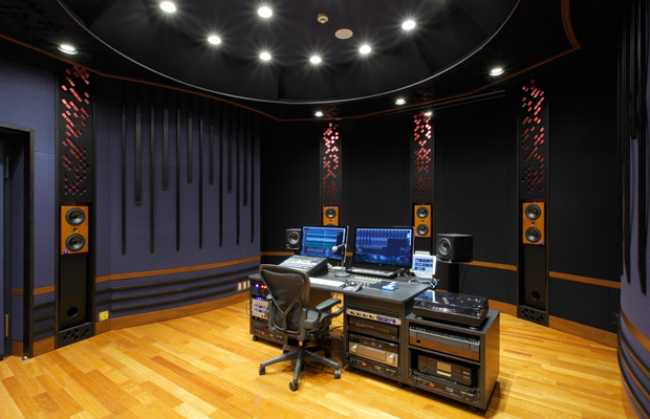Synthax Japan and RME work together at Kansai University
Published: ASIA

JAPAN: Distributor Synthax Japan Inc has installed an RME solution into Kansai University’s Socio Sound Studio. The project was initiated by Professor Fumio Miura, who engaged the distributor having gained previous exposure to both Synthax Japan and RME’s sound card when he founded a simulcast internet radio service, Radiko.
The professor teaches a course on the music and media industries, rather than an actual music course; therefore he required a system that was simple to operate without compromising on sound quality. The studio is divided into three separate rooms – Control Room, Recording Booth and a smaller recording room, named Sound Lock. Madi optical cables were deployed to connect the rooms, with PreSonus Studio One running off a Mac Pro serving as the DAW in the Control Room, while 7.1.4 surround monitors are utilised. Monitor signals can then be played back in the Recording Booth via myMix and by way of an OctaMic XTC in Sound Lock.
‘The studio’s concept involves a modular-based system, instead of having a large and expensive console, which will make for an easier upgrade in the future,’ noted Yuki Sakamoto, general manager at Synthax Japan, adding ‘as you know, Japan is a very narrow country and land issues are always a problem for us. The studio has been extremely efficiently laid out to maximise space.’
The Madi cables transfer up to 32 channels from the Recording Booth and Sound Lock to a MADIface XT in the Control Room to be mixed and sent back to the booths for monitoring. A custom-made OSC controller, dubbed the Hanaoka TotalMix FX controller, which is connected to the PC via Ethernet, controls the MADIface XT’s included TotalMix FX software. Mr Sakamoto explained that Synthax ‘developed the customised control surface for TotalMix FX alongside Japanese manufacturer Hanaoka Musen Denki’ and is ‘still being enhanced with help from RME regarding its Open Sound Control implementation’.
Meanwhile, output from the 7.1.4 surround speakers is directed towards an ADI-8QSM, which converts the signals into analogue before sending them to the active monitors, and also provides an additional analogue system allowing A/V playback for switching between playback feeds. ‘RME's AD/DA converters and audio interfaces offer the functionality of a big mixing console, while taking up a much smaller amount of space and incurring little of the cost,’ Mr Sakamoto added.
The OctaMic XTC receives 16 microphone inputs, which are converted from analogue to Madi before being sent to the Control Room, whilst the MADIface XT’s monitor output is sent from the Control Room to the Recording Booth’s ADI-8QSM, following which it is guided to an IEX-16L channel input expander for cue monitor distribution to the myMix terminals. During rehearsals, a stereo mix can be transferred to the OctaMic XTC for monitoring, making use of its phono outs and PA speakers.
There is also the option of a simplified 8-channel setup in which only those signals converted by the OctaMix XTC into Madi are transferred to the Control Room. The monitor mix is then directed back to the OctaMic XTC, providing output through its phono ports. A mobile 16U case on castor wheels houses both the OctaMic XTC and a Fireface UCX, enabling students to record outside of the studio, with the Fireface UCX acting as a main audio interface without Madi.
‘This studio is a perfect showcase of a Madi-based setup and for the products that Synthax Japan distributes,’ concluded Mr Sakamoto. ‘The recording system is easy to use and the sound quality is excellent, meaning the professor and students are happy to play in the studio.’
